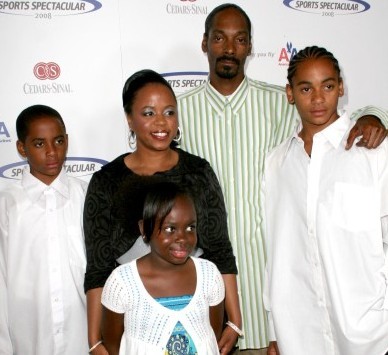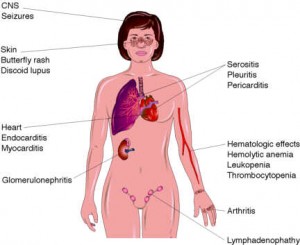“Snoop Daughter” dealing with Lupus

In this week’s People magazine, rap star Snoop Dogg (born Calvin Broadus) opens up about his daughter Cori’s 5 year battle with lupus. This admission was actually done at the urging of his now 11 year old daughter, who thought telling her story might help others coping with the disease. Cori first began having systems in 2005, when they noticed a light patch on her face. It was originally attributed to a reaction to the sun, however, Cori began to lose a lot of hair as well as a significant weight loss. She also complained of headaches and joint stiffness. After many tests and trials of several medications, the diagnosis of systemic lupus erythematosis (SLE) was made. It took a while to come up with the best combination of medications to get Cori’s lupus under control, but now she is leading an active life. The rapper told People: “She’s the toughest little thing I’ve ever met… She’s on the honor roll, playing volleyball and softball, living life. She has all this joy. In the beginning lupus was winning. But now Cori is.”
SLE is an autoimmune disease in which the body attacks itself because the immune system fails to recognize the difference between the body’s own cells and tissues and”foreign” substances such as the bacteria and viruses that our immune systems normally protect us against. We’ve touched upon this disease in stories about “Lucy in the Sky with Diamonds” inspiration Lucy Vodden, and more recently with Lady’s Gaga’s admission that she has “borderline lupus.” In this blog, I thought we’d touch a little on SLE in children.
Anyone can get Lupus, but it is most common among girls and women. More than 90% of people with lupus are female. In the US, lupus is more likely to occur among people who are of African-American, Hispanic-Latino, and Native American descent. In addition, African-Americans and Hispanic/Latinos tend to develop lupus at a younger age and have more severe symptoms than white Americans. According to the Lupus Foundation of America, between 1.5 and 2 million Americans have some form of lupus, and this includes some 5-10 thousand children.
At one time lupus was thought to be more severe in children than in adults, but most physicians no longer believe this. It is the same disease in children as in as adults. Children, however, are often sick for a longer period before the diagnosis is made, which can make it more likely for them to have significant internal organ involvement when the diagnosis is made. As a result, children with lupus often are required to begin aggressive therapy soon after diagnosis.
As was the case with Snoop Dog’s daughter, lupus is often difficult to diagnose. It’s often mistaken for other diseases and has been called the “great imitator.” The signs of lupus differ from person to person. Some people have just a few signs; others have more.
- Red rash or color change on the face, often in the shape of a butterfly across the nose and cheeks
- Painful or swollen joints
- Unexplained fever
- Chest pain with deep breathing
- Swollen glands
- Extreme fatigue (feeling tired all the time)
- Unusual hair loss (mainly on the scalp)
- Pale or purple fingers or toes from cold or stress
- Sensitivity to the sun
- Low blood count
- Depression, trouble thinking, and/or memory problems.
Other signs are mouth sores, unexplained seizures (convulsions), “seeing things” (hallucinations), repeated miscarriages, and unexplained kidney problems.
For more information, see our Resounding Health casebook on systemic lupus erythematosis.

























6 Comments